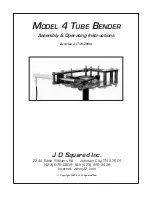
2.
Check whether the quality of the salt complies as a minimum
with Directive EN 16370.
3.
Check whether there are salt deposits on the base around
the brine tank. This can mean that the brine tank has over‐
flowed.
10.2.6 Cooling the Control Cabinet
Check whether all the fans are working correctly.
10.2.7 Check the amperage at the membrane cells
The amperage at the membrane cell has a direct relationship to
production. In most cases, a deviation in the amperage measure
leads to a poor output. The reason for this is that there is too little
salt in the membrane cell or too much water in the caustic tank.
Generally, a lower amperage figure leads to lower production.
NOTE: There is a double cell cable with the Chlorinsitu-III 600 ...
1750 g/h and Chlorinsitu-III 2000 ... 3500 g/h systems. In this case,
you need to measure using 2 cell cables.
1.
Measure the amperage figure during production with a cur‐
rent clamp on the membrane cell(s).
2.
Compare the amperage measured with the amperage shown
on the
[STATUS] screen.
3.
Note the value measured in the maintenance schedule.
10.2.8 Monitoring the Amperage at the Membrane Cells
The voltage at the membrane cell is the measurement of the power
consumed. The voltage is composed of the sum of the voltage of
the individual cell chambers. The voltage per membrane cell has to
be between 3.5 ... 5.5 V DC during production. A strong deviation
with one of the voltages can indicate a fault (short circuit) in one of
the membrane cells. A constant high level of voltage in all mem‐
brane cells can indicate an output problem.
Maintenance checks and preparation for maintenance
59
Summary of Contents for Chlorinsitu-III
Page 18: ...A1706 15 4 13 3 3 16 12 17 Fig 8 Components of the system side B Components of the system 18 ...
Page 117: ...117 ...
Page 118: ...118 ...
Page 119: ...119 ...
















































